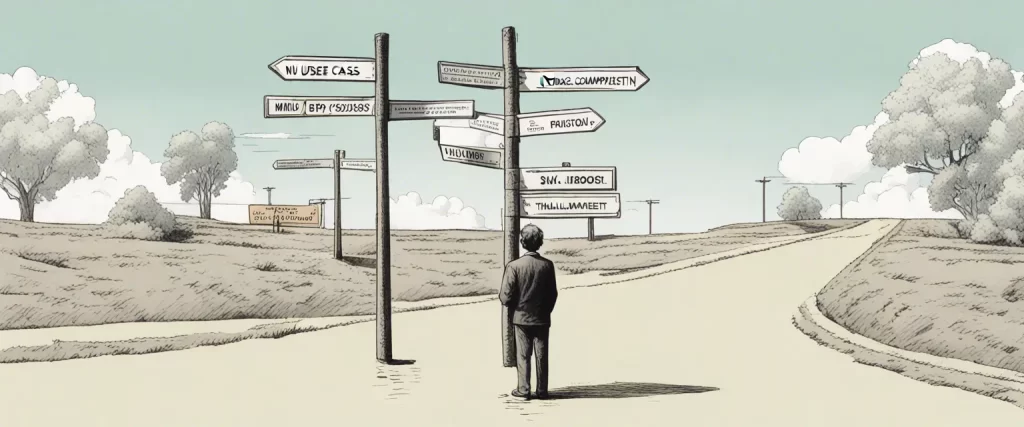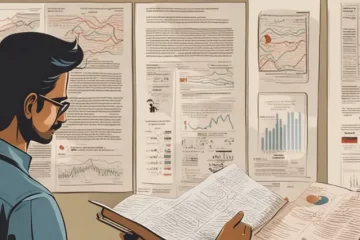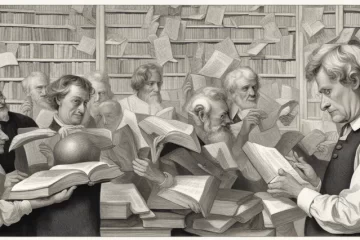Unlocking the otential of Decision-Making: A Must-Read Book Review of Nudge

In a world that bombards us with countless options and information, making decisions can feel overwhelming. From what to have for breakfast to choosing a career path, our daily lives are filled with choices that shape our future. But what if there was a way to navigate these decisions more effectively, nudging ourselves towards better choices without sacrificing our freedom? Enter “Nudge,” a groundbreaking book by Richard H. Thaler and Cass R. Sunstein that explores the art of decision-making and the power of small choices. In this article, we delve into the core concepts of “Nudge” and unveil the secrets behind making smarter decisions that align with our long-term goals.
What is Decision-making
Decision-making is the process of choosing a course of action or making a judgment based on available options and relevant information. It involves considering various factors, such as goals, values, risks, and potential outcomes, and weighing them against each other to arrive at the best possible decision. Decision-making can be influenced by individual or group preferences, biases, and cognitive processes, and it can range from simple everyday choices to complex and strategic decisions in personal, professional, or organizational contexts.
Why is Decision-making Important to Us
Decision-making is important to us for several reasons:
1. Achieving goals: Making effective decisions helps us move closer to our desired outcomes and goals. Whether in our personal or professional lives, decision-making enables us to take action and make progress.
2. Problem-solving: Decision-making is a core component of problem-solving. It involves identifying and evaluating different options to find the best solution to a problem. Without effective decision-making, it would be challenging to overcome obstacles or resolve issues.
3. Autonomy and control: Making decisions empowers us to have control over our lives. When we actively participate in decision-making processes, we exercise our autonomy and are more likely to feel a sense of ownership and satisfaction with the outcomes.
4. Adaptability and resilience: Life is full of uncertainties and constant change. Making decisions allows us to adapt to new situations and navigate through challenges. It helps us become more resilient and better equipped to cope with unexpected circumstances.
5. Learning and growth: Decision-making provides valuable opportunities for learning and growth. Even if a decision doesn’t yield the desired outcome, we can gain insights and knowledge from the experience. Each decision made contributes to our personal and professional development.
6. Efficiency and time management: Making decisions in a timely manner is crucial for efficient resource allocation and effective time management. Procrastination or indecisiveness can lead to wasted time, missed opportunities, and increased stress.
7. Collaboration and teamwork: Decision-making often involves collaboration and teamwork. It helps bring diverse perspectives together to make informed choices. Engaging in decision-making processes with others fosters communication, cooperation, and collective problem-solving.
In summary, decision-making is important to us as it enables us to achieve goals, problem-solve, maintain autonomy and control, adapt to change, learn and grow, manage time efficiently, and collaborate with others effectively.
Unlocking Branding from Nudge

Nudge Introduction
Nudge” by Richard H. Thaler and Cass R. Sunstein explores the concept of libertarian paternalism, which suggests that people can be guided to make better decisions without limiting their freedom of choice. The authors argue that by understanding human biases and systematic errors in thinking, policymakers and decision-makers can design environments that encourage individuals to make choices that are in their best interest, such as healthier lifestyles or saving for retirement. Thaler and Sunstein propose various strategies or “nudges” that can be used to improve decision-making, such as default options, simple reminders, or changing the way choices are presented. They also delve into the ethics and practicalities of nudging, discussing potential objections and controversial uses. Overall, “Nudge” offers insights into how small alterations to choices and environments can profoundly impact individuals’ behaviors and decision-making, ultimately promoting better outcomes for society.
Learning Decision-making Methods
In the book “Nudge” by Richard H. Thaler and Cass R. Sunstein, the authors discuss various decision-making methods and concepts that can help individuals make better choices. Here are some of the decision-making methods mentioned in the book:
1. Libertarian Paternalism: This approach suggests that while individuals should have freedom of choice, it is acceptable to nudge them toward making better decisions for their own benefit. It emphasizes the use of gentle nudges to influence behavior without limiting freedom.
2. Choice Architecture: This method focuses on the design of the decision-making environment to influence choices. By altering the way choices are presented or organized, individuals can be guided toward certain decisions.
3. Defaults: People tend to stick with the default option presented to them, so decision-makers can use this tendency to their advantage. Designing default options that align with desired outcomes can lead to better decision-making.
4. Anchoring: The authors highlight how initial information, or an initial “anchor,” can influence subsequent decision-making. By strategically providing an anchor, decision-makers can shape people’s perception of value and guide their choices.
5. Social Norms: People are often influenced by what others around them are doing. Taking advantage of social norms can be an effective way to encourage desirable behaviors and choices.
6. Feedback: Providing individuals with timely and relevant feedback about their choices can help them better understand the consequences of their decisions and improve their decision-making in the future.
7. Salience: The method of salience involves making certain options or information more prominent or noticeable, increasing their chances of being considered and chosen.
8. Framing: The way choices or information are presented can significantly impact decision-making. Framing involves presenting the same information in different ways to shape how individuals perceive and evaluate options.
9. Incentives: By aligning incentives with desired behaviors, decision-makers can encourage individuals to make better choices. Financial incentives, rewards, or penalties can be leveraged to nudge people in the right direction.
10. Mapping and Timely Reminders: Mapping out decisions and providing timely reminders can help individuals stay on track and make better choices. Visual cues, notifications, and prompts can be useful tools in this method.
These are some of the decision-making methods discussed in “Nudge,” illustrating how subtle changes in the decision-making environment can have a significant impact on the choices people make.
Nudge Quotes
Nudge quotes as follows:
1. “The ‘choice architecture’ of our environment influences our decisions, often without us even realizing it.”
2. “Small and subtle changes in how choices are framed and presented can have a big impact on people’s behavior.”
3. “Nudges are interventions designed to help people make better choices for themselves, without restricting their freedom of choice.”
4. “By understanding and leveraging people’s cognitive biases, we can design nudges that lead to better outcomes and improved decision-making.”
5. “Nudges can be used to encourage people to save more, eat healthier, and make better financial decisions.”
6. “People prefer the default option, so making the desired behavior the default can lead to significant positive changes.”
7. “We are strongly influenced by what others are doing, so social norms can be used as powerful nudges to shape behavior.”
8. “Nudges can help individuals overcome their present-biased preferences and make choices that align with their long-term goals and well-being.”
9. “Making choices more salient and transparent helps individuals make better decisions by providing them with clear information and feedback.”
10. “Nudge is about making it easier for people to make choices that improve their lives, without undermining their autonomy or freedom of choice.”

More Books About Nudge by Richard H. Thaler, Cass R. Sunstein
1. “Nudge: Improving Decisions About Health, Wealth, and Happiness” by Richard H. Thaler, Cass R. Sunstein:
Start your journey into the fascinating field of behavioral economics with the groundbreaking book that initiated the “nudge theory.” This insightful guide explores how small, seemingly insignificant changes can have a profound impact on decision-making, fostering better choices for individuals and society.
2. Thinking, Fast and Slow” by Daniel Kahneman:
Written by Nobel laureate Daniel Kahneman, this book dives deep into the two systems that drive our thinking: the fast, intuitive system and the slower, more deliberate one. With engaging anecdotes and rigorous scientific research, Kahneman explores the biases and fallacies that affect our decision-making, shedding light on how our minds construct reality.
3. The Undoing Project: A Friendship That Changed Our Minds” by Michael Lewis:
In this brilliant work, Michael Lewis explores the lives and work of two Israeli psychologists, Daniel Kahneman and Amos Tversky, whose groundbreaking research forms the foundation of behavioral economics. Their unique friendship and collaborative efforts revolutionized our understanding of human decision-making and biases, ultimately shaping the field of behavioral economics as we know it today.
4. Predictably Irrational: The Hidden Forces That Shape Our Decisions” by Dan Ariely:
Dan Ariely, a renowned behavioral economist, delves into our irrational decision-making processes, uncovering the hidden factors that often defy logic. With engaging anecdotes and thought-provoking experiments, Ariely explores topics such as our tendency to overvalue what we already possess and how social norms affect our choices.
5. Misbehaving: The Making of Behavioral Economics” by Richard H. Thaler:
In this captivating book, Richard H. Thaler shares captivating stories about how he and his colleagues challenged traditional economic theories to revolutionize the field. With a mix of humor, honesty, and intellectual curiosity, Thaler recounts his journey from questioning the dominant economic theories to becoming one of the pioneers of behavioral economics. “Misbehaving” is a must-read for those interested in understanding how modern economic theories have evolved.
Embark on an eye-opening journey through behavioral economics with these insightful reads. From understanding how our decision-making process shapes our lives to exploring the stories behind the revolutionary ideas in the field, these books will provide you with a robust understanding of human behavior and its implications.



0 Comments